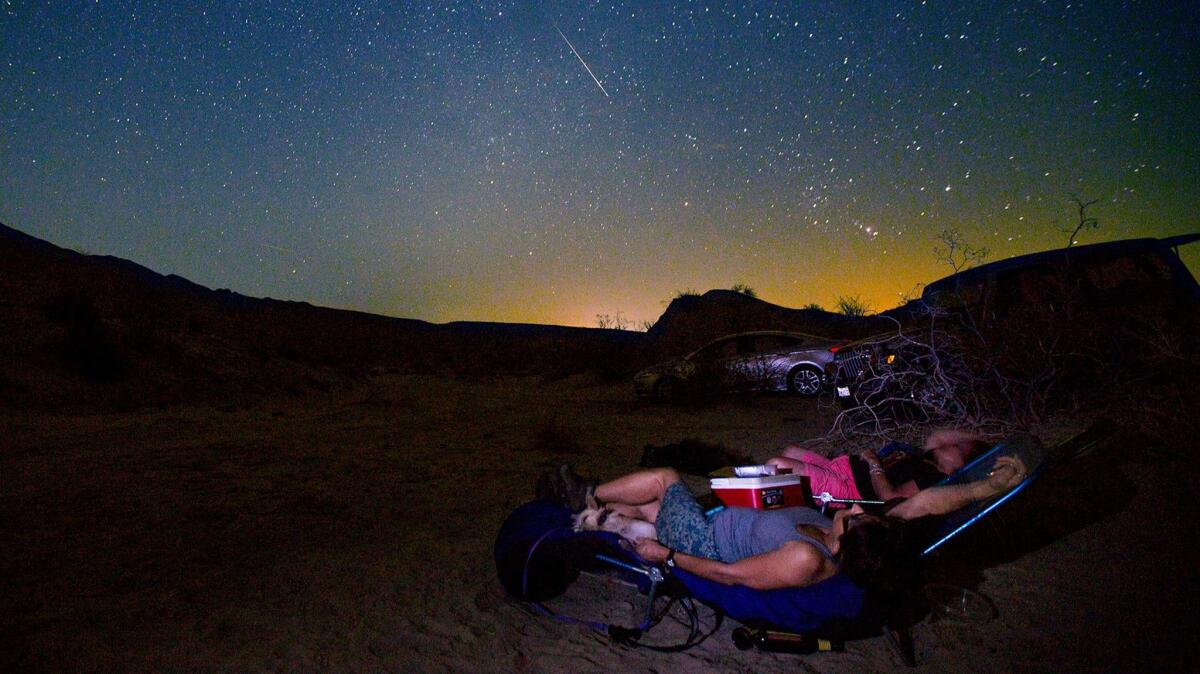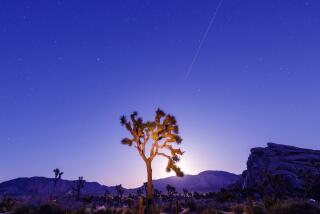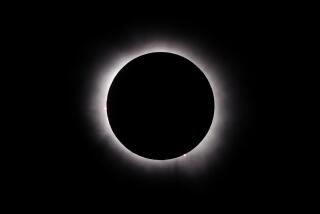Perseid meteor shower is near peak. Here’s where to go to watch

The Perseid meteor shower will peak in the early hours Friday and Saturday, but don’t expect to easily see them from your backyard if you live in Southern California.
To really appreciate the celestial show, you want to get as far from the urban glow of lights as possible. For those who want to go a bit far afield — at least 130 miles from Los Angeles — Death Valley, Joshua Tree and Anza-Borrego desert parks are tops.
Fortunately, there are places within an hour’s drive of downtown L.A. that offer good viewing spots too, provided skies don’t cloud up.
— Drive to the Angeles National Forest north of L.A., where you can pull off at an overlook, set out your chair and look up. More serious stargazers can spend the night at campgrounds ($12 a night) such as Chilao, 26 miles north of La Cañada Flintridge on Highway 2, and Buckhorn, 10 miles north of Chilao. Both are drive-in sites.
— The Santa Monica Mountains west of L.A.stretch from Pacific Palisades to Ventura. State and national parklands usually close at dusk, but you can drive up one of the canyons and park safely at a pullout or overlook. You also can join a free night-sky program from 8:30 to 9:30 p.m. at Malibu Creek State Park, 1925 Las Virgenes Road, Calabasas.
The best time to see the Perseids is Saturday when the Earth passes through the “densest, dustiest area” of the debris trail left by the comet Swift-Tuttle, according to Space.com.
They won’t be as spectacular as 2016, an “outburst” year that doubled the number of meteors seen in a typical Perseid shower, the website says. And light from a three-quarters moon this year may wash out some visibility too. Still, you can expect to see 40 to 50 meteors per hour.
In the evening, stargazers should look for “an earthgrazer, which is a slow-moving and long-lasting meteor that travels horizontally across the sky,” EarthSky’s website says.
And you may see more meteors after midnight and into the wee hours. Grab a star chart or mobile star app to identify other things (such as Venus) that stand out brightly in the sky.
Check out more EarthSky tips on meteor watching.
ALSO
Want to watch the upcoming total solar eclipse from 35,000 feet?
The August eclipse is the ‘most spectacular thing you’ll ever see,’ especially in Missouri
The best places to see this summer’s ‘Great American Total Solar Eclipse’
More to Read
Sign up for The Wild
We’ll help you find the best places to hike, bike and run, as well as the perfect silent spots for meditation and yoga.
You may occasionally receive promotional content from the Los Angeles Times.







